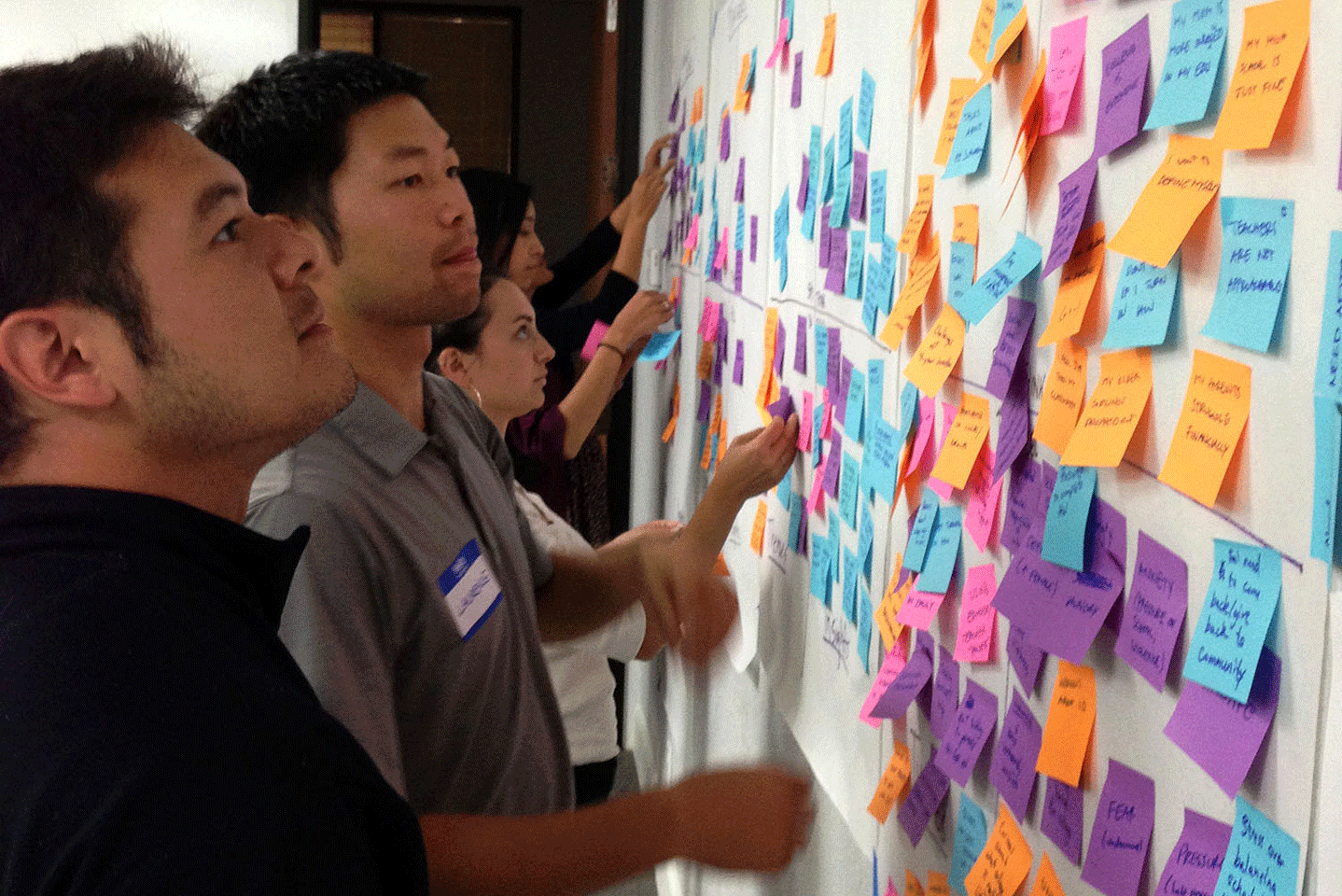
Design thinking is a structured method of approaching problems that helps many businesses find success through innovation.
Think of Airbnb, whose founders used design thinking to transform their business from a startup to a billion-dollar enterprise.
This 5-step approach is used in tech-related fields like user experience (UX) and product management, as well as hands-on fields like architecture, engineering, and graphic design — although it's applicable almost anywhere!
Brainstorming Strategies Using Design Thinking

Design thinking starts with two stages:
Empathize by imagining the wants and needs of hypothetical users
Define by creating a clear concept of what you want to produce through this process
Them comes the time to Ideate or brainstorm.
Brainstorming:
Works best in groups with different perspectives
Should generate as many ideas as possible
For an effective session, consider handing out stacks of post-it notes. Team members can write one idea per post-it and add it to a board. This also lets you see the ideas visually and even rearrange them.

Here are some tips for hosting your session:
Set a time limit — aim for 15-30 minutes.
Start with a clear problem statement — something that can be clearly answered, such as "How do we make it easier for clients to find information about our company?"
Don't judge — save all comments for a later stage
Encourage ridiculous answers — start big and crazy, and scale back from there.
Aim for quantity — don't spend too much time on one thought.
Use visuals — draw it out!
Quiz
Imagine your team's problem statement is: "How do we increase revenue?" Which of these ideas should be shared select all that apply:
Example Brainstorming Session
Watch a team in action as they employ design thinking to solve a problem:
Some Other Ideas

Here are a few other creative methods of brainstorming:
Brainwriting — everyone writes down 3 ideas and passes them to the right. The person to the right adds a bullet point or strategy for each idea. Continue passing until each idea has made a full lap around the circle.
Round-robin — share one idea at a time. No one is allowed to comment until each person in the room has shared.
Figure storming — pick a well-known figure (like an actor or a president) and imagine how they would approach the problem.

A variation of figure storming involves assigning each participant a "role" or character. This will help participants to approach the problem from different mindsets.
For example, if your problem involves improving customer services, possible roles are a new customer, an existing customer, an angry client, and a client advocate.
Take Action
Brainstorming is one of the most important stages of design thinking — it's where ideas are born!
It's most effective in groups where multiple perspectives are offered, and should never exclude an idea, no matter how ridiculous.
This is the time to shake off the shackles and let your creativity fly!
Your feedback matters to us.
This Byte helped me better understand the topic.
